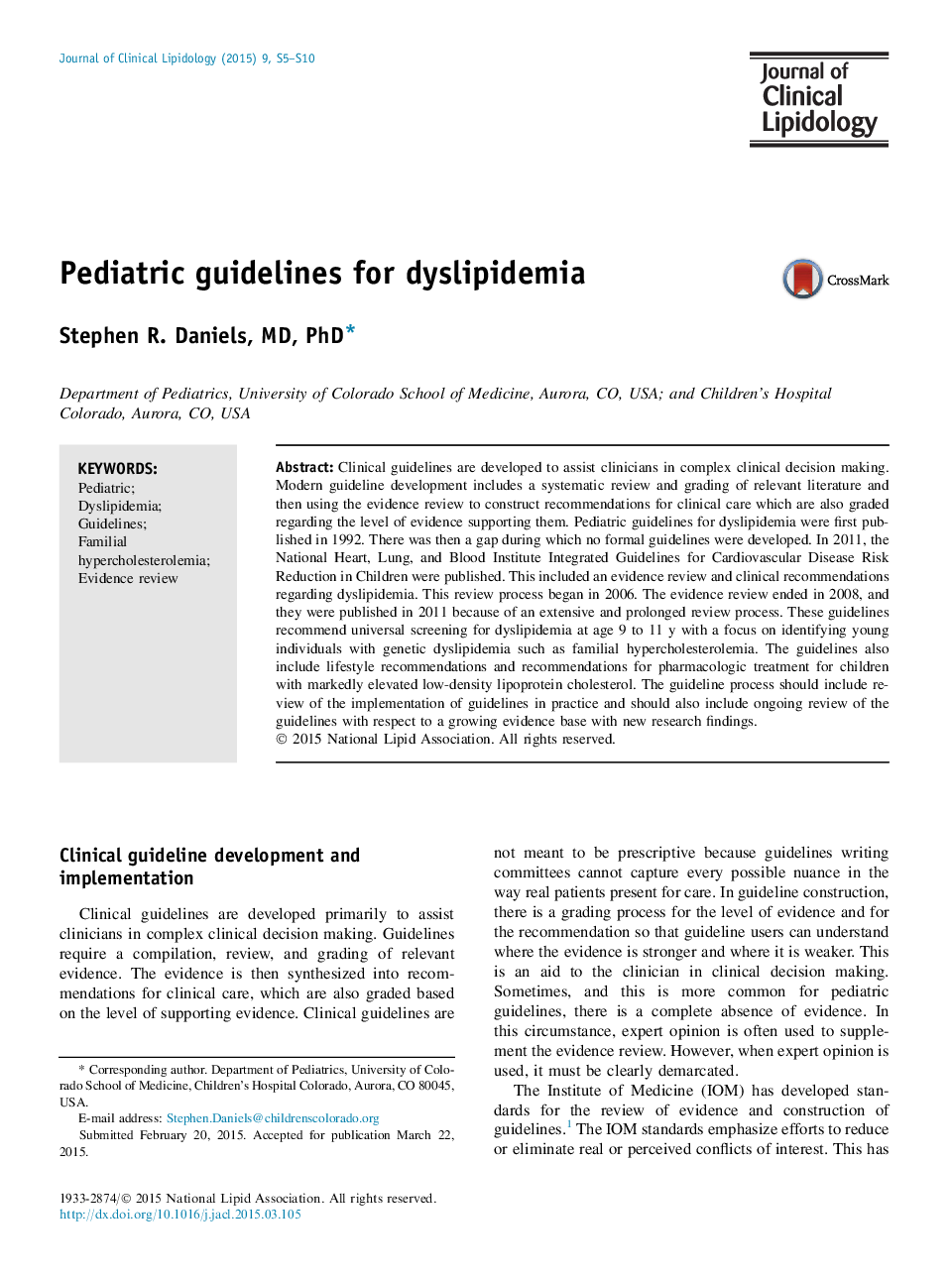| Article ID | Journal | Published Year | Pages | File Type |
|---|---|---|---|---|
| 2965808 | Journal of Clinical Lipidology | 2015 | 6 Pages |
•Clinical guidelines are crucial to facilitate evidence-based management of dyslipidemia.•The 2011 Guidelines represent the current best approach to managing dyslipidemia.•Guidelines should be “living” documents, regularly updated with new evidence.•Pediatric Guidelines Committees should take adult guidelines into account.
Clinical guidelines are developed to assist clinicians in complex clinical decision making. Modern guideline development includes a systematic review and grading of relevant literature and then using the evidence review to construct recommendations for clinical care which are also graded regarding the level of evidence supporting them. Pediatric guidelines for dyslipidemia were first published in 1992. There was then a gap during which no formal guidelines were developed. In 2011, the National Heart, Lung, and Blood Institute Integrated Guidelines for Cardiovascular Disease Risk Reduction in Children were published. This included an evidence review and clinical recommendations regarding dyslipidemia. This review process began in 2006. The evidence review ended in 2008, and they were published in 2011 because of an extensive and prolonged review process. These guidelines recommend universal screening for dyslipidemia at age 9 to 11 y with a focus on identifying young individuals with genetic dyslipidemia such as familial hypercholesterolemia. The guidelines also include lifestyle recommendations and recommendations for pharmacologic treatment for children with markedly elevated low-density lipoprotein cholesterol. The guideline process should include review of the implementation of guidelines in practice and should also include ongoing review of the guidelines with respect to a growing evidence base with new research findings.
